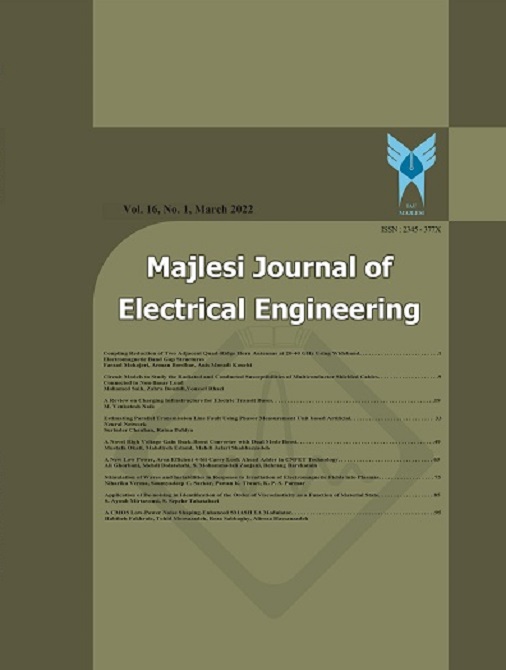[1] A. K. Bhattacharyya, and S. K. Tandon, “Radar cross section of a finite planar structure coated with a lossy dielectric, ” IEEE Trans. Antennas Propag., vol. 32, no. 9, pp. 1003–1007, 2014.
[2] Y. Fan, H. Yang, X. Liu, H. Zhu, and G. Zou, “Preparation and study on radar absorbing materials of nickel-coated carbon fiber and flake graphite, ” Journal of Alloys and Compounds, vol. 461, pp. 490-494, 2008.
[3] F. C. Smith, “Edge coatings that reduce monostatic RCS, ” IEE Proc.-Radar Sonar Navig., vol. 149, no. 6, pp. 310-314, Dec. 2002.
[4] E. F. Knott, J. F. Shaeffer, and M. T. Tuley, Radar Cross Section. Raleigh, NC, USA, SciTech Pub., 2004.
[5] D. Colton and P. B. Monk, “Target identification of coated objects, ” IEEE Trans. Antennas Propag., vol. 54, no. 4, pp. 1232–1242, Apr. 2006.
[6] H. Mosallaei and Y. Rahmat-Samii, “RCS reduction of canonical targets using genetic algorithm synthesized RAM, ” IEEE Trans. Antennas Propag., vol. 48, no. 10, pp. 1594–1606, Oct. 2000.
[7] H. T. Chen, G. Q. Zhu, and S. Y. He, “Using genetic algorithm to reduce the radar cross section of three-dimensional anisotropic impedance object, ” Prog. Electromagn. Res. B, vol. 9, pp. 231-248, 2008.
[8] J.-J. Yao, S.-Y. He, Y.-H. Zhang, H.-C. Yin, C. Wang, and G.-Q. Zhu, “Evaluation of scattering from electrically large and complex PEC target coated with uniaxial electric anisotropic medium layer based on asymptotic soulution in spectral domain, ” IEEE Trans. Antennas Propag., vol. 62, no. 4, pp. 2175–2186, Apr. 2014.
[9] N. Engheta, “Thin absorbing screens using metamaterial surfaces, ” In IEEE Antennas and Propagation Society International Symposium (IEEE Cat. No. 02CH37313), IEEE, vol. 2, pp. 392–395, 2002.
[10] D. Sievenpiper, L. Zhang, R. FJ. Broas, N. G. Alexopolous, and E. Yablonovitch, “High-impedance electromagnetic surfaces with a forbidden frequency band, ” IEEE Trans. Microw. Theory Techn., vol. 47, no. 11, pp. 2059-2074, 1999.
[11] A. Erentok, P. L. Luljak, and R. W. Ziolkowski, “Characterization of a volumetric metamaterial realization of an artificial magnetic conductor for antenna applications, ” IEEE Trans. Antennas Propag., vol. 53, no. 1, pp. 160–172, Jan. 2005.
[12] S. M. Hashemi, S. A. Tretyakov, M. Soleimani, and C. R. Simovski, “Dual-polarized angularly stable high-impedance surface, ” IEEE Trans. Antennas Propag., vol. 61, no. 8, pp. 4101–4108, Aug. 2013.
[13] K. T. Chandrasekaran, M. F. Karim, Nasimuddin, and A. Alphones, “CRLH structure-based high-impedance surface for performance enhancement of planar antennas, ” IET Microwaves, Antennas & Propagation, vol. 11, no. 6, pp. 818–826, 2016.
[14] J. Chen, Z. Hu, G. Wang, X. Huang, S. Wang, X. Hu, and M. Liu, “Highimpedance surface-based broadband absorbers with interference theory, ” IEEE Trans. Antennas Propag., vol. 63, no. 10, pp. 4367–4374, Oct. 2015.
[15] M. Paquay, J. -C. Iriarte, I. Ederra, R. Gonzalo, and P. de Maagt, “Thin AMC structure for radar cross-section reduction, ” IEEE Trans. Antennas Propag., vol. 55, no. 12, pp. 3630–3638, Dec. 2007.
[16] C. A. Balanis, M. A. Amiri, A. Y. Modi, S. Pandi, and C. R. Birtcher, “Applications of AMC-based impedance surfaces, ” EPJ Appl. Metamat., vol. 5, no. 3, 2018.
[17] A. Ghayekhloo, M. Afsahi, and A. A. Orouji, “An Optimized Checkerboard Structure for Cross-Section Reduction: Producing a Coating Surface for Bistatic Radar Using the Equivalent Electric Circuit Model, ” IEEE Antennas Propag. Mag., vol. 60, no. 5, pp. 78-85, Oct. 2018.
[18] W. C. Chew, Waves and Fields in Inhomogeneous Media. Piscataway, NJ, USA, IEEE Press, 1999.

